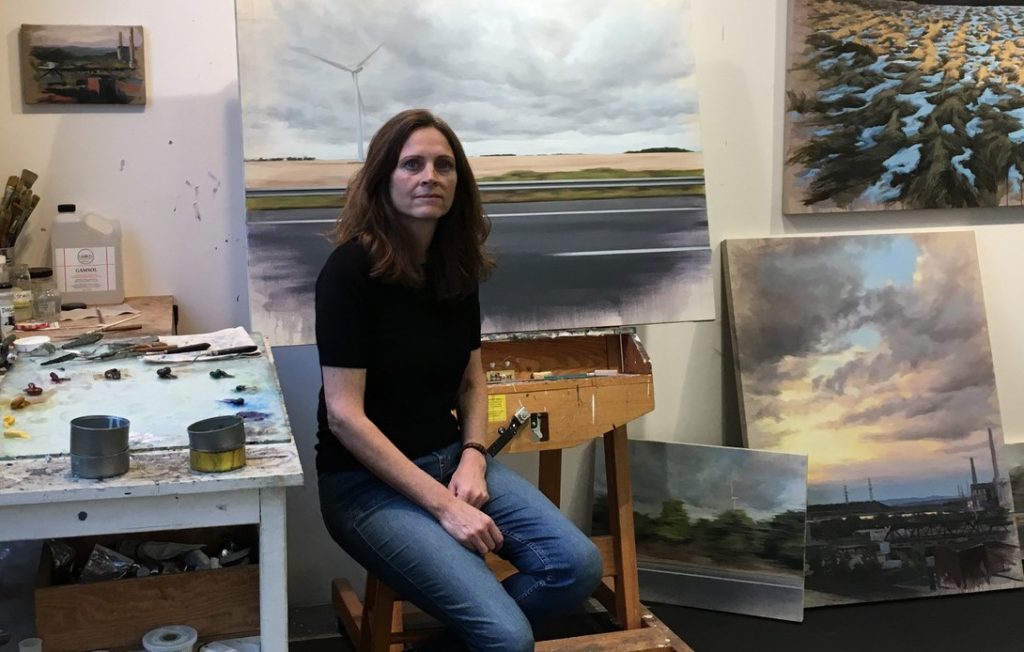Jennifer Krause Chapeau Painter - New Jersey, USA
You were a finalist in the Luxembourg Art Prize, – Can you explain… about the Luxembourg Art Prize?
Yes I was one of 12 finalists selected for the 2017 prize. I heard about it from a facebook posting from another artist. I was intrigued, it sounded interesting, the finalists would get to travel to Luxembourg, all expenses paid, to be in a group show at a gallery, and a panel of judges would pick one artist for the large cash prize. It was an international competition so I didn’t really think that I had a chance and I debated about whether it was worth the time, effort, and application fee. But in the end I said to myself I may not have much of a chance but if I don’t submit an application I will have ZERO chance. So of course I was in a state of disbelief when I found out I was chosen as one of the finalists. In fact I was taken by surprise because once I finished the application I more or less just put it out of my mind and forgot what the announcement date was. My first notification was by text message, and I thought ,is this for real? I didn’t believe it till I saw it on the website the following day. Naturally I was thrilled but was still in a state of disbelief for awhile. It ended up being a great experience, I got to travel with my husband to charming Luxembourg city, and meet interesting and cool artists from all over the globe. I very much enjoyed meeting the gallery owner Herve Lancelin and spending time with all the other artists while we were in Luxembourg. So although I didn’t win the large cash prize, it was an invaluable experience that I won’t soon forget.
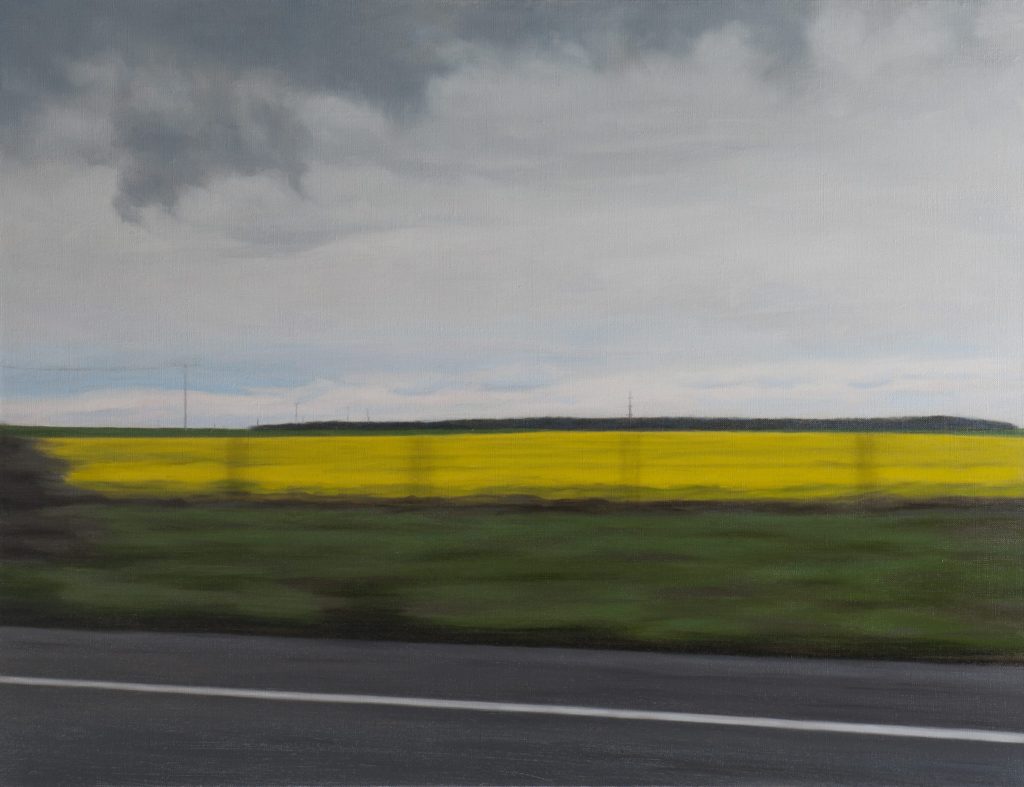
Colza Field 11, 26 x 34 inches,Oil on Canvas, Luxembourg Prize painting
What does this mean to New Jersey?
I was one of two finalists from the United States and I currently live in New Jersey, but other than that I’m not sure.
Tell us about your time as a scenic artist on major motion pictures?
I became interested in film and video towards the end of art school and did an independent study in video, working at the local television station. It was the early days of M-TV and music videos were taking off, I decided that film/television was a creative field that I could actually get a job in to support myself as an artist. Once I started working in New York I saw very quickly that I needed to be in a union, because all the network tv shows and big feature films used only union crews. I took classes on the weekend in scenic painting, because my schooling was in fine arts. This prepared me for the union exam, which was a rigorous process involving a month long take home, test to do four large paintings, and then an 8 hour practical test where the judges watched, as you executed on the spot the painting and drawing exercises that were given. I was fortunate and got in on my first try, and was one of only six artists admitted that year to United Scenic Artists Local 829.
Working as a scenic artist was a perfect job for me, I had health insurance and other benefits, but the work was freelance so I had time off between jobs to work on my own painting. I worked for 17 years mostly on feature films and network tv. The work was very wide ranging and I learned to work with all different kinds of materials and techniques. I liked the big scale that we usually had to work on, and we could make anything look like the real thing. I painted lots of faux marble and woodgrain, and made things look rusted and old, anything the set designer wanted. One of the most memorable sets I worked on was for a Woody Allen movie called “Shadows and Fog” where we created an old European town, on a stage, complete with real cobblestone streets, and multiple story buildings. The people I worked with were great, I even occasionally got to meet some of the stars, which added to the experience.
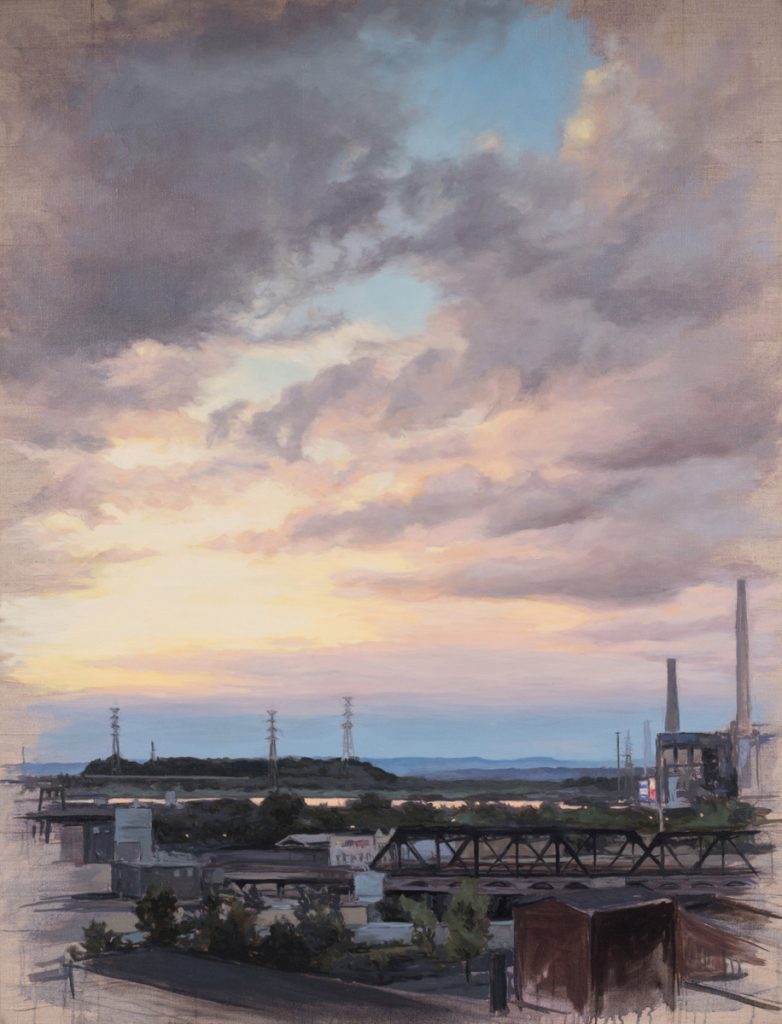
Studio View, 42 x 32, Oil on Linen
How has this former work influenced your current work practice?
I think primarily it has made me a more facile painter. I can work with any kind of paint or sculpting material on any scale. I had to be able to do precision work like painting lettering on a sign, and then also be able to paint very broad, loose, and fast to say “age” the whole side of a building. So being forced to paint in all different kinds of ways gave me the experience and confidence to be able to paint however I choose. A lot of the scenic work involved creating believable textures, and I think this did influence my work in the 1990’s where I used lots of textures and materials and made paintings that verged on relief sculptures.
‘From the Road’ exhibition is a collection of images taking fruition over the past 10 -14 years discuss the unfolding of this exhibition.
Essentially, I worked with the curator and we just picked work that spanned from the (then) present going back ten years or so to the beginning of my “road series” paintings.
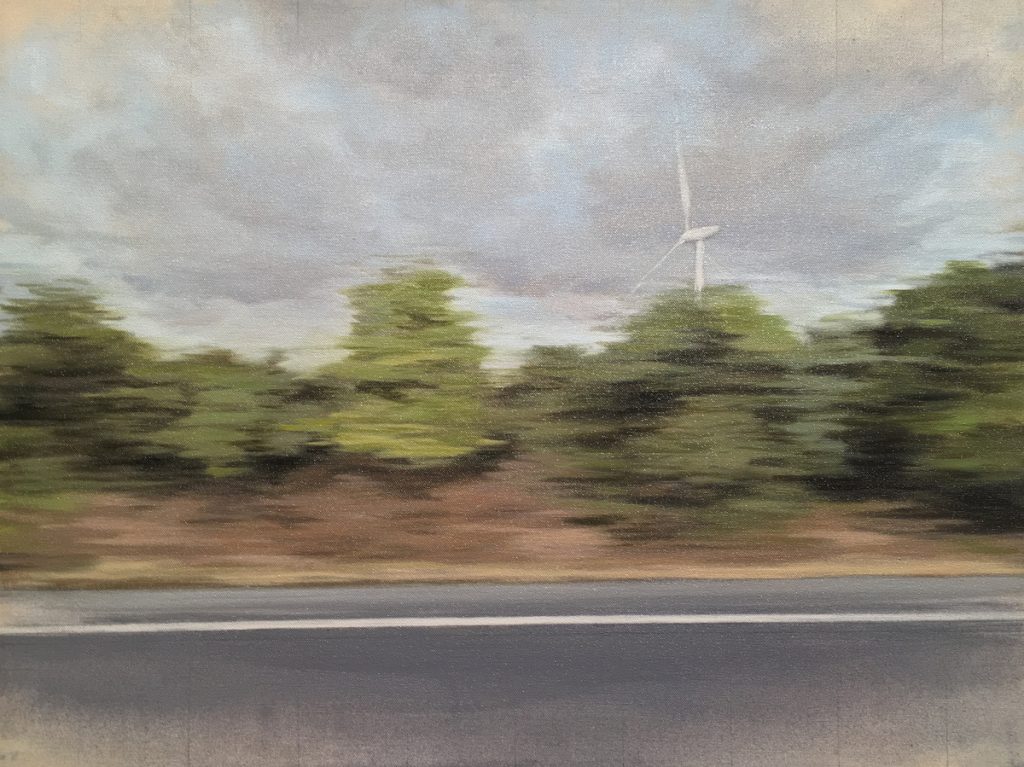
Eolienne 1, 18 x 24, Oil on Canvas
Discuss the ‘blur’ aspect of this work.
The paintings are all essentially landscapes from the vantage point of a moving car or train. The blur of the foreground is what gives them a palpable sense of motion. But beyond that it is an interesting formal property to explore, the blur abstracts parts of the painting and gives me a new visual texture to work with. I also feel that it symbolizes the fluidity of the present, while the distance is what lies ahead in the future, or is left behind in the past. It makes a landscape painting fresh for me and I continue to use it today.
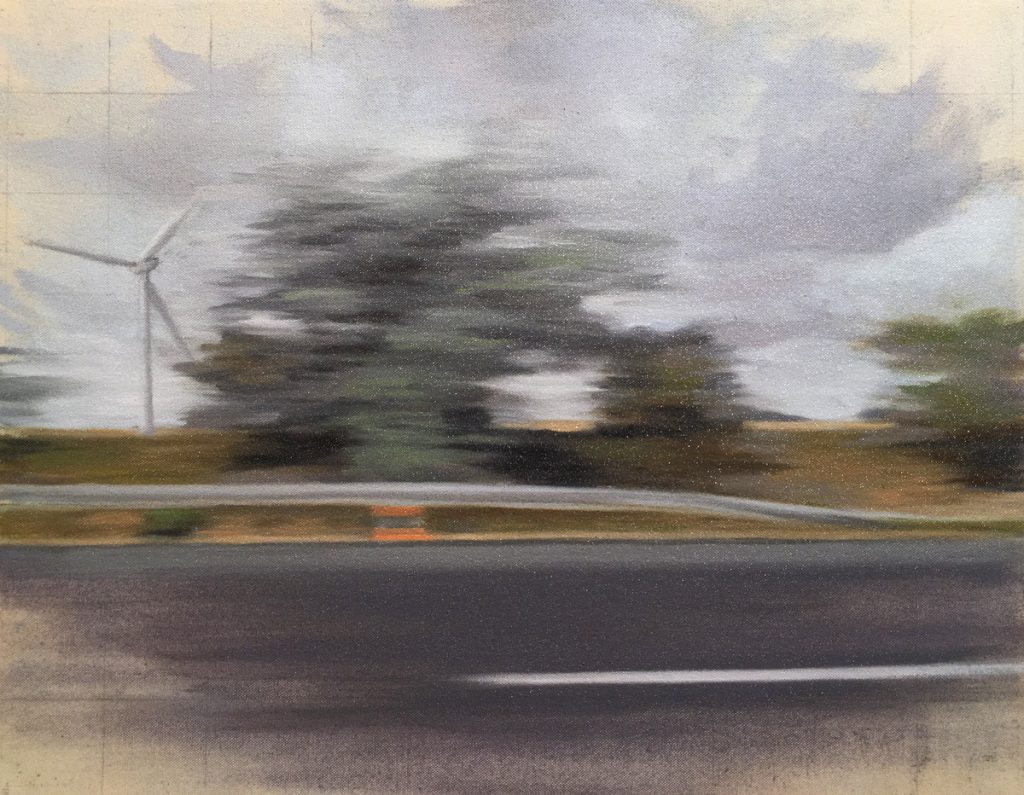
Eolienne 11, 14 x 11, Oil on Canvas
Your comment, ‘I think the solitude of driving alone for long periods allows your mind to really wander.’ Discuss both the comment in relation to this collection of works.
I started to make the road series of paintings during a time when I was driving back and forth between Nashville, Tennessee and Hoboken, New Jersey.
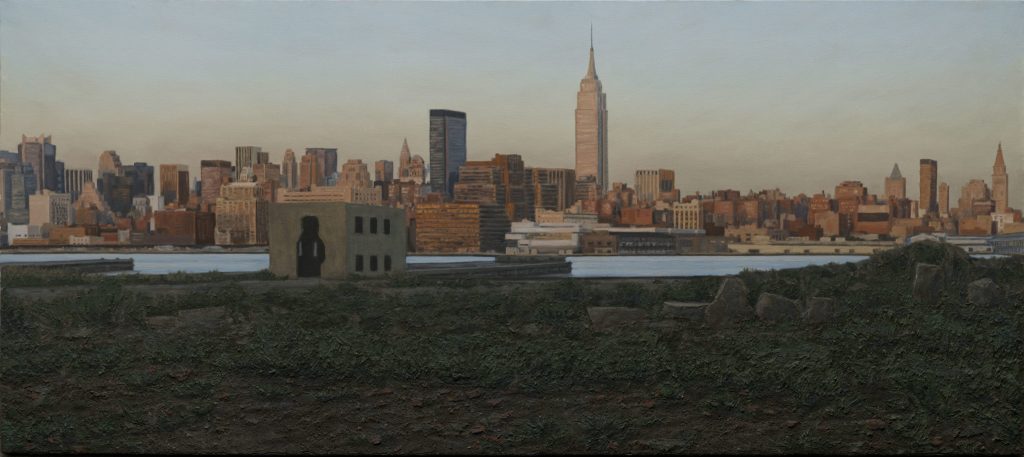
The Gold Coast, Hoboken, 32 x 72 inches, oil, acrylic and sand on canvas, mounted on wood.
This was a 16 hour drive so I had lots of time to think and look out the window. By myself, I would have lots of good music to listen to and a camera at hand. I found it to be very meditative especially when I was in the country with hardly any traffic. You are cruising along at highway speed so you have to keep focused on the road but your mind is still free to wonder, and the landscape just rolls by like a movie.
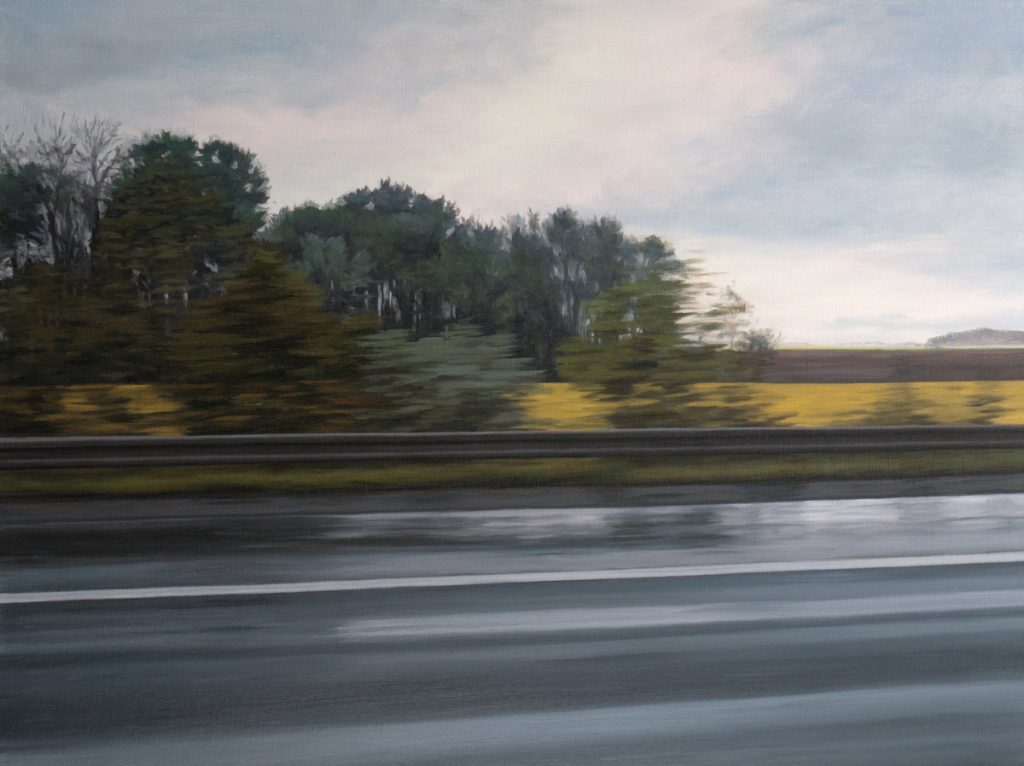
After the Rain, 30 x 40 inches, Oil on Linen
Your works emphasis the relationship of landscape and weather.
I am primarily inspired by qualities of light, and color, and those are of course a product of the weather. I am partial to fog, I love the way it minimalizes the landscape, making parts disappear off into nothingness. And of course cloudy skies create an endless array of colors and moods, from glorious to ominous, that I just can’t resist painting.
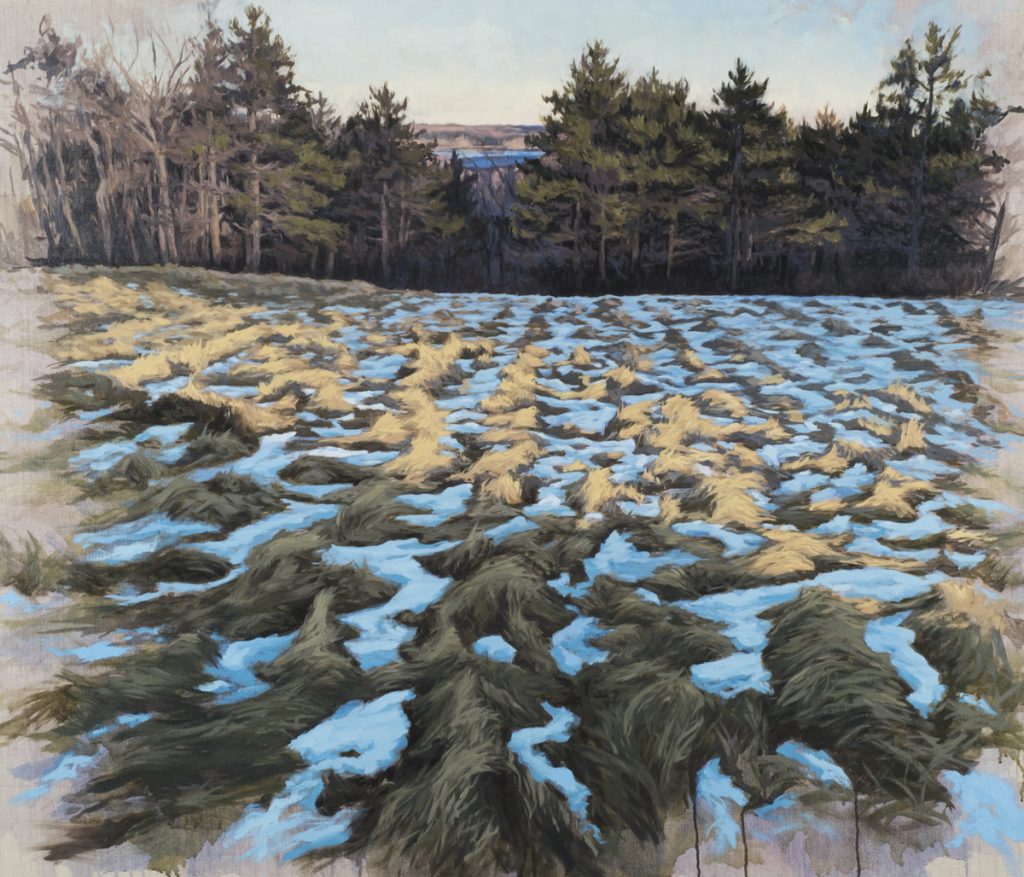
Hibernal Rays 36 x 42 inches, Oil on Linen
Your water colours are all small, 7 x 10 inches, discuss.
Yes the water colors tend to be small because I use them mostly when I am traveling and painting outside. So they are easy to transport and I can finish a small watercolor in a couple of hours.
What is the base of your sketch book drawings, watercolour and or photographs?
I use my photographs as sketches for my moving landscapes, that I then paint back in the studio. I shoot spontaneously as I am traveling, not knowing what I will see as the road unfolds. I am interested primarily in the juxtaposition of the man-made and the natural world.
I do keep a sketch book, but it is mostly to keep a record of the paintings I am working on, each one has a page or so where I make sketches and keep any notes I have about them. It also helps me remember when I started and finished a painting, because I always have a few going at the same time.
You also use pastel on paper expand on when and why you choose a particular medium.
I use pastels sometimes to do fast sketches from life, like. I use the watercolor. I also sometimes use them to do large preliminary drawings for paintings when I need to work out a composition or some other element that I’m not sure of before I start on the canvas.
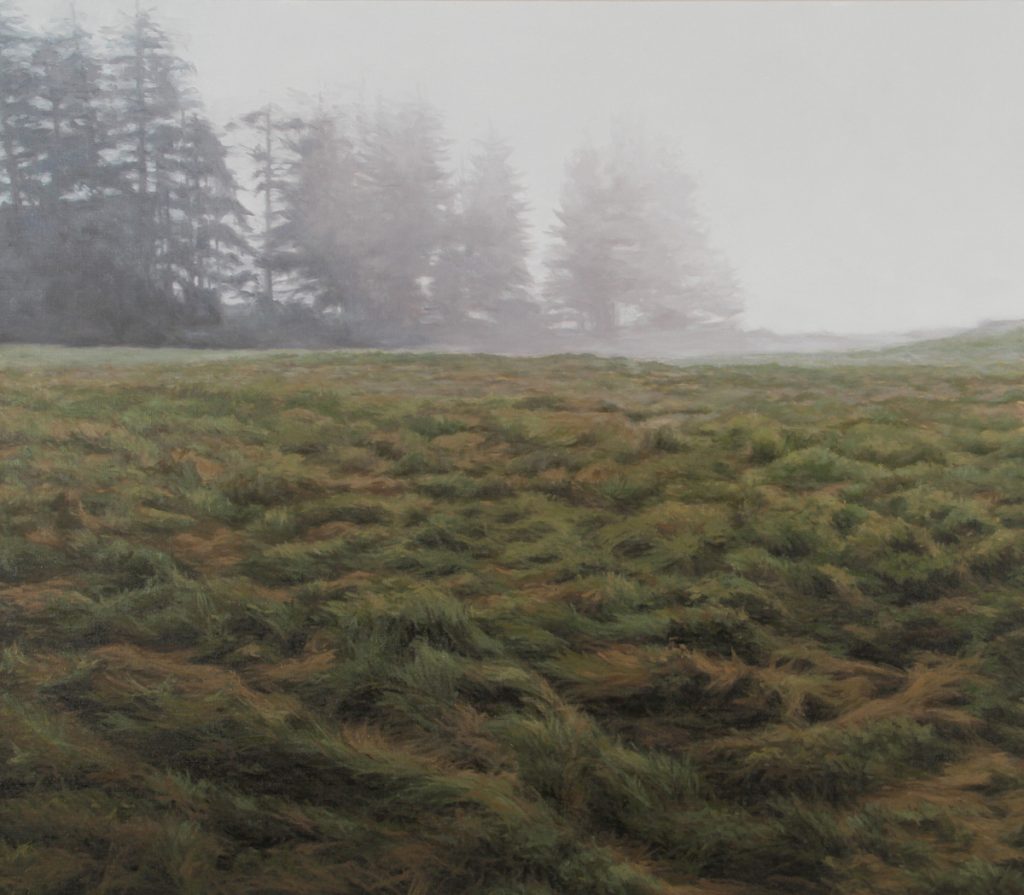
Field and Fog, 40 x 46, Oil on Linen
Can you explain your personal thoughts on the importance of the artist in recording time and place.
We all respond in one way or another to the times we live in. I think an artist can respond in many ways to contemporary culture, without necessarily documenting it.
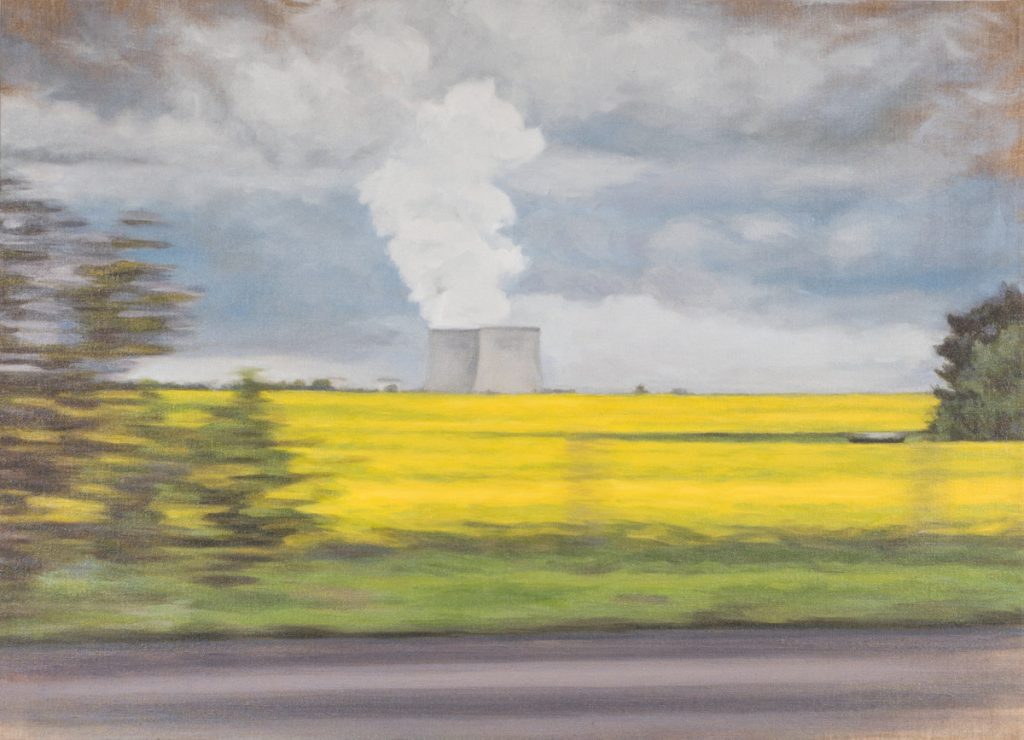
Nuclear and Colza Plants, 26 x 36 inches, Oil on Linen
I personally do like to record my experience and what I have seen in a particular time and place, I like to reflect back something of my personal experience of contemporary life for people now and hopefully in the future to ponder. I do think it is one of the important things artists have done and should continue to do, but art is deeply personal and can provoke thought about many things in many ways and there is room for it all.
Contact details:
Jennifer Krause Chapeau
Jennifer Krause Chapeau, New Jersey, USA
Interview by Deborah Blakeley, July 2018
Think a colleague or friend could benefit from this interview?
Knowledge is one of the biggest assets in any business. So why not forward this on to your friends and colleagues so they too can start taking advantage of the insightful information the artist has given?
Other artists you may be interested in:


